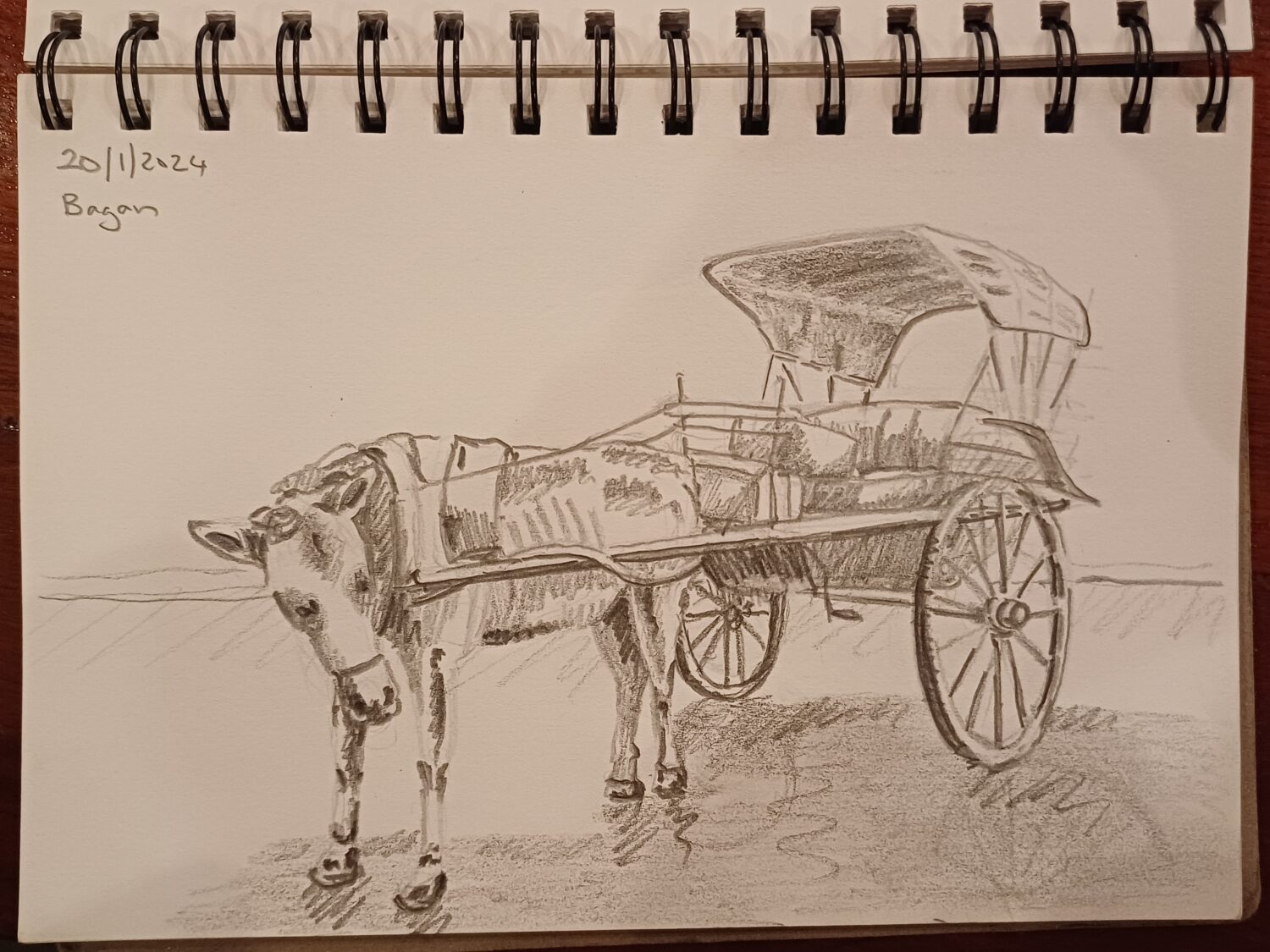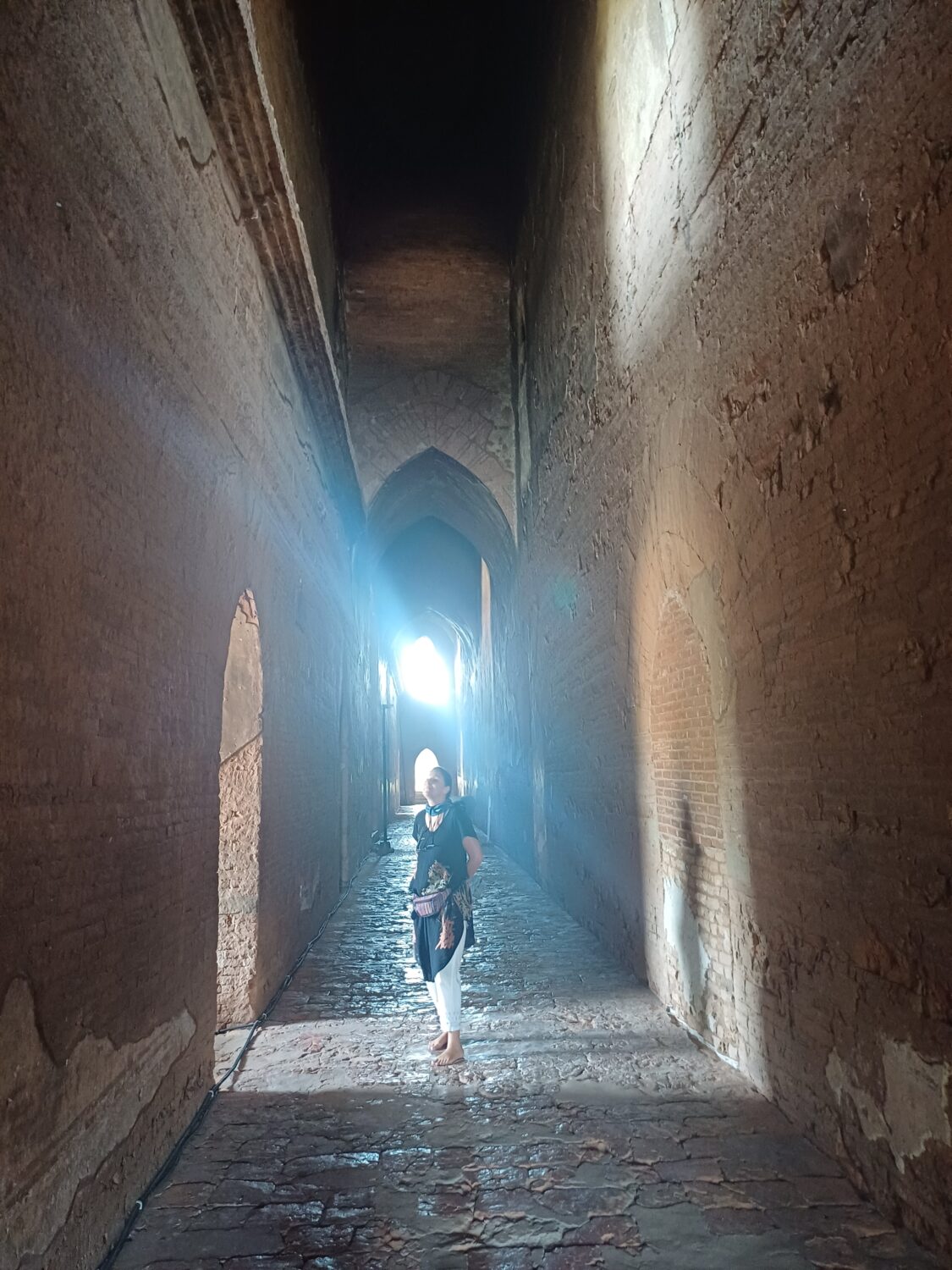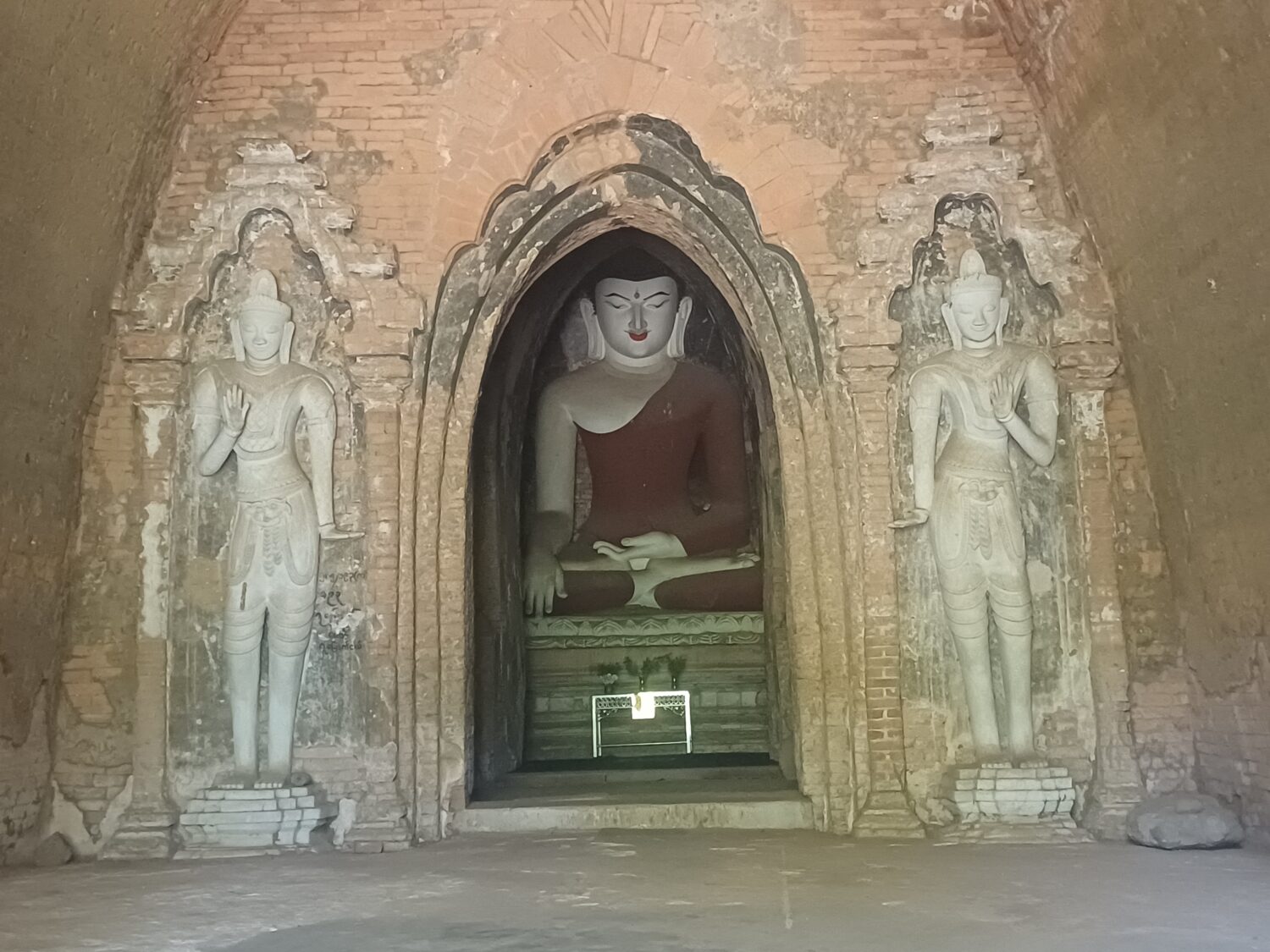
Temples, temples and more…temples!
Bagan – Myanmar’s city of temples – is no doubt the highlight of a visit to the country, and one we were very much looking forward to. I was first attracted by the Bagan Temple Marathon – an annual running event that loops around the plain that the temples adorn. I never got around to doing it, but it must have been a great event
It’s impossible not to compare the Bagan temples to those at Angkor Wat in Cambodia as they’re roughly contemporary. Broadly speaking, the Bagan temples aren’t as complex as those at Angkor Wat, with simpler architecture and less ornate decoration, but they make up for this in sheer number. There are about 3,600 listed monuments in the area but the majority of these are small and relatively simple brick stupas (Stupas are enclosed and without entrances, to protect the sacred relics contained within). There are also an impressive number of larger temples i.e. the larger buildings used as places of worship with interior rooms often containing statues and religious relics. Many of the temples house large Buddha statues, some plain and some extremely ornate with extensive gold plating. We discovered that each pose, posture, expression and hand gesture of the Buddha statues was significant to the life of Buddha. There are over 100 different poses that illustrate the life of Buddha – we aren’t sure quite how many of the different versions we saw, but we got into double figures!



Temple fatigue is a real thing! There are so many temples it can become a bit overwhelming – you don’t know which way to look or where to point your camera. It’s forbidden to wear shoes within the temples and sometimes some of the exterior areas as well. We seemed to be forever taking off our sandals and spent most of the time with the souls of our feet completely black – there was a compulsory swill-down each time we got back to our hotel! But, it was all part of the experience. It is impossible not to be impressed with the sheer scale of the temple infrastructure, and the beauty of many of them.
It took a day or two to relax into it though. A couple of days in, I was taking fewer photos to soak up the sights by eye rather than through a viewfinder, enjoying the atmosphere, the landscape, the buzz of other tourists, the dust, farm animals, and the ever-present local vendors; rather than just the sites themselves. I did feel a little sacrilegious though when I caught myself thinking that some of the small monuments would make excellent pizza ovens.

The temples expand over a large area of flat plains, edged by the Irrawaddy River. We had hoped to take the ferry from Mandalay to Bagan but that is not currently an option. Sitting riverside though we did get to see a different side to Bagan, watching the sunset across dry fields containing crops of peanuts, and seeing fishermen switch from fishing to tourist trips as the sun set. Given that it is a large area to cover, we needed an alternative option to walking. Thankfully, the entrepreneurial locals hire little e-scooters for tourists, circumnavigating the ban on foreigners driving in the country. It’s a great way to get around and it was quite a difference from the last time we hired a bike – a Royal Enfield in Tamil Nadu. You can read about that adventure in the below link.
Tamil Nadu – Exploring South India Part 1 – Ripening Nicely



Bagan was a completely different experience to the bigger, bustling cities of Yangon and Mandalay. We were happy to have five days there and able to continue our slow-tourist style, with plenty of breaks for cold drinks and snacks, sampling local food, souvenir shopping or people-watching to break it up. There were opportunities for some local immersion experiences too, watching the centuries-long skills of lacquerware production and visiting a workshop making traditional parasols. Watch this space for our Myanmar-inspired lacquerware and temple bell kitchen cabinet door handles, which will be gracing our kitchen on our return.




Our slower pace gave me the opportunity for some sketching too. I like the thought of periodically stopping to sketch during the day. I enjoy quick sketches, taking 20 or 30 minutes. I enjoy the challenge of recording an image on paper in a limited time – forcing you to focus on which lines and tones are most important rather than sketching each brick. There are a lot of bricks in Bagan! It’s not always easy to coordinate sketching breaks with snack stalls and I’ve found myself sketching from my photos a bit. I’ve always thought this to be cheating – the camera already transposes the images from three to two dimensions, taking all the funny angles and foreshortening challenges out of it. But it’s better than nothing.
One of my ongoing resolutions is to learn to draw people. Back in Devon, I took a couple of life drawing classes, which I’ll rejoin when I’m back, and I’ve already signed up for a watercolour course too.


Despite there being so much to see from the ground, you can see why hot air balloon rides over Bagan are so popular. With literally thousands of monuments spread over a broad plain, this alternative aerial perspective must be magical. Balloon rides are the sort of thing we would have jumped on in our old lives. In the ‘old days’, we’d typically book flights, accommodation and maybe a key activity or two, months in advance, then forget about that trip until a week or so before. On this trip, it’s been nice being a bit freer, a bit more spontaneous.
With the advertised price of a balloon ride being about the same as what we paid for three weeks’ accommodation, we decided to sit this one out. However, we did take the opportunity to witness them from afar with a sunrise outing to one of the temples we were told would work as a great viewing platform. We hadn’t factored in how cold it would be at 5 am as we set out, poorly equipped for the nippy weather on our little chug-along e-scooter. It was no surprise that Helen declined to repeat the experience the following day, though even through gritted (and chattering) teeth she admits it was worth it for the view!

In Mandalay, we’d started to see a pattern of businesses that had closed down because of “The Current Situation”. It wasn’t just tourist things – the “gold leaf pounding district” (popular for putting on Buddhist sites), transport routes, and many restaurants simply don’t exist anymore. It became more pronounced in Bagan where it became a bit surreal reading our pre-military-coup guidebook which warned of crowded sunrise-watching spots, booked-out accommodation, or the need to book onward travel well in advance. The word ‘decimated’ is a bit cliched, but that’s exactly what the foreign tourism industry in Bagan feels like. That said, this too was what made our time in Myanmar so exceptional. Giving us a glimpse into a country that few have seen and largely feeling like we had the place to ourselves. With so few Western tourists in the country meant that, more often than not, we were the tourist attractions, not the temples! We’re probably insta-famous given the number of photos we were asked to pose for.

Last year we felt that our two visa runs were too quick and that whilst we got the required passport stamps, we didn’t get much of a break. It’s funny to say but living on a sailboat can sometimes be quite hard work and it’s nice to leave Aroha tucked up in a marina and enjoy a simpler form of life for a while.
Despite being severely limited to where we were able to safely travel, we felt we were able to get a good idea of Myanmar in our three weeks there, travelling at a gentle pace.
Heading back to Thailand, we’ll head south along the west coast of Thailand in the coming months, ending the season across the border in Malaysia. Not a new country for us, but a new one for Aroha!
The photos below share more of our experience in Bagan. We hope you enjoy them.

















Follow and like us to be notified of future blogs!






One Comment
Neil
Another amazing trip Bryan and Helen and fantastic photos too 👍